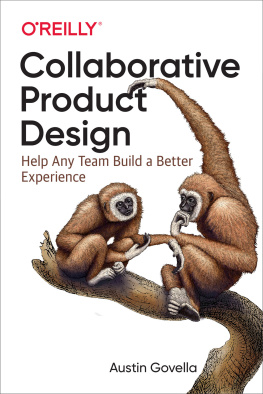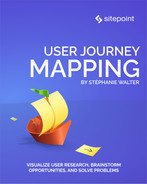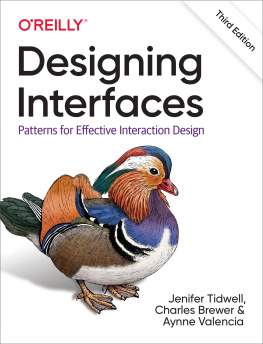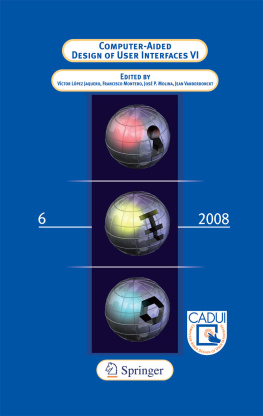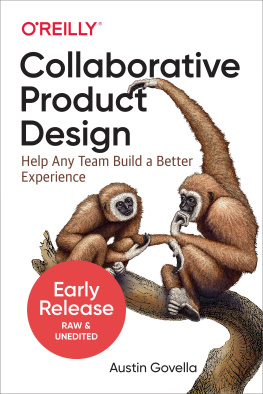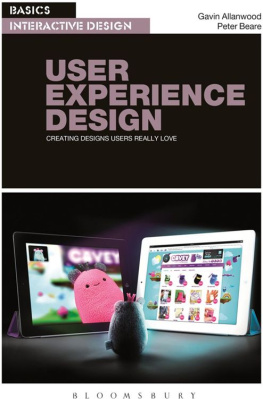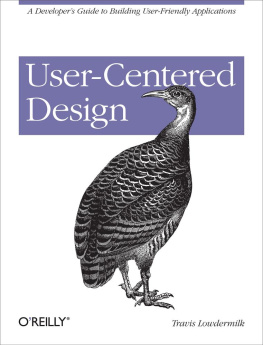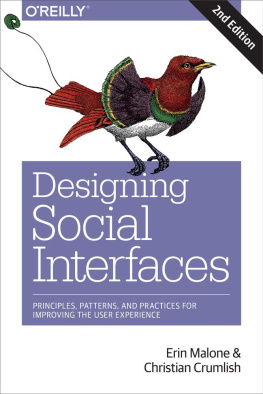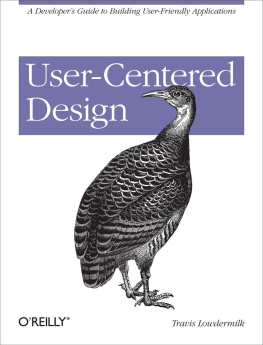Collaborative Product Design
by Austin Govella
Copyright 2019 Austin Govella. All rights reserved.
Printed in Canada.
Published by OReilly Media, Inc., 1005 Gravenstein Highway North, Sebastopol, CA 95472.
OReilly books may be purchased for educational, business, or sales promotional use. Online editions are also available for most titles (http://oreilly.com). For more information, contact our corporate/institutional sales department: (800) 998-9938 or corporate@oreilly.com.
Acquisitions Editor: Jennifer Pollock DevelopmentalEditor: Angela Rufino Production Editor: Kristen Brown Copyeditor: Jasmine Kwityn Proofreader: Rachel Monaghan Indexer: Lucie Haskins | CoverDesigner: Karen Montgomery Interior Designers: Ron Bilodeau and
Monica Kamsvaag Illustrators: Jose Marzan and
Rebecca Demarest Compositor: Kristen Brown |
May 2019: First Edition.
Revision History for the First Edition:
2019-04-29First release
See http://oreilly.com/catalog/errata.csp?isbn=0636920057895 for release details.
The OReilly logo is a registered trademark of OReilly Media, Inc. Collaborative Product Design and related trade dress are trademarks of OReilly Media, Inc.
Many of the designations used by manufacturers and sellers to distinguish their products are claimed as trademarks. Where those designations appear in this book, and OReilly Media, Inc., was aware of a trademark claim, the designations have been printed in caps or initial caps.
Although the publisher and author have used reasonable care in preparing this book, the information it contains is distributed as is and without warranties of any kind. This book is not intended as legal or financial advice, and not all of the recommendations may be suitable for your situation. Professional legal and financial advisors should be consulted, as needed. Neither the publisher nor the author shall be liable for any costs, expenses, or damages resulting from use of or reliance on the information contained in this book.
978-1-491-97503-9
[TI]
[ Preface ]
This is the last book youll ever need only if something tragic happens to you in the next hours.
This book probably isnt for you. Your coworkers recognize brilliance. They follow your recommendations without any fuss, give you plenty of time to think aboutwhatever. You never rush to complete anything. You never start over or change direction, and your boss never changes their mind or asks for anything crazy.
I wish I had a gig like that.
I work on cross-functional teams where people from business, technology, and design mill about and barely speak the same language with less and less time to do more and more. It doesnt matter how close we get because the direction always changes, and the deadline never moves.
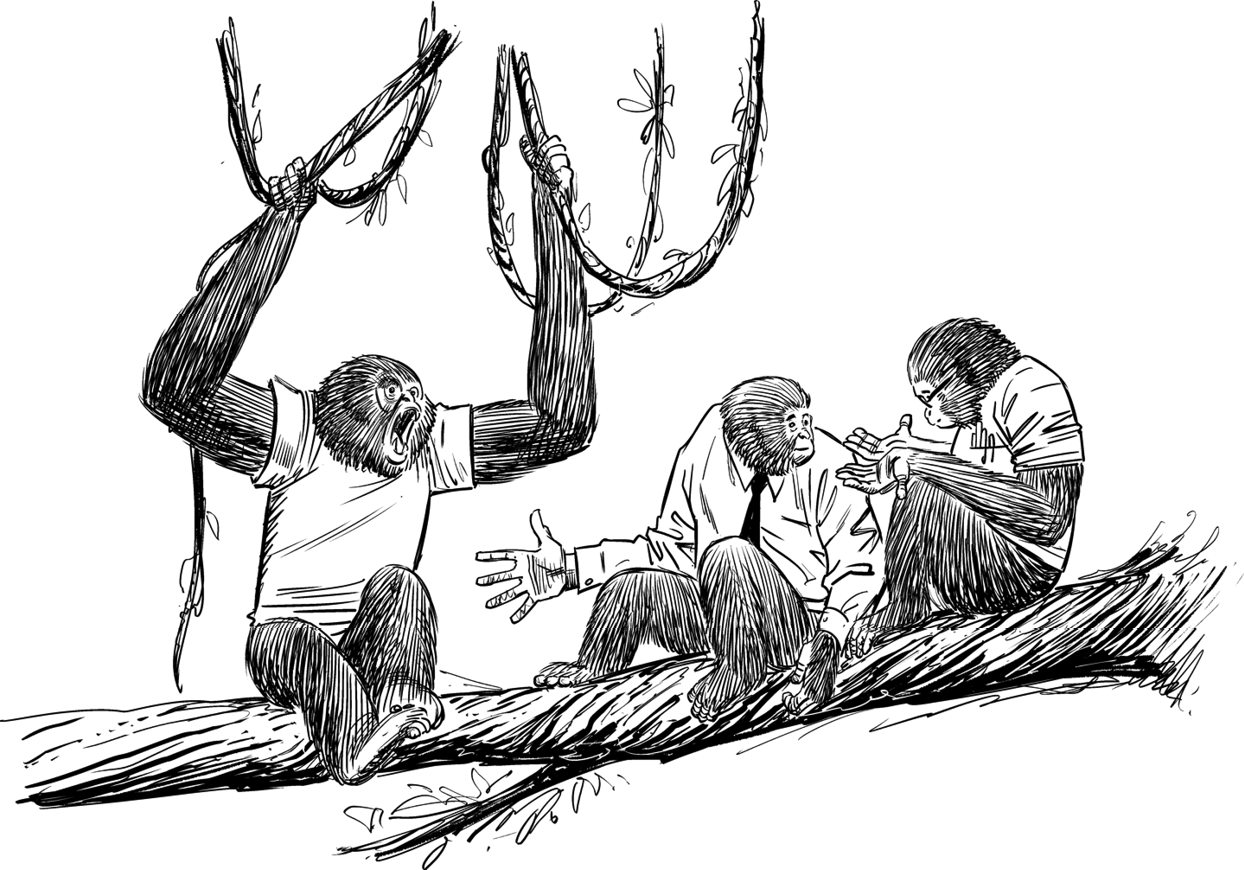
Figure P-1
Some poor schlubs work across silos, oreven worseon cross-functional teams where business, technology, and design have to work together
I wrote this book for poor schlubs who schlep ideas across silos to get things built with ridiculous deadlines (Figure P-). This isnt a process book. Its a get things done book. For people who work on teams. Teams get things done when they work better together.
This book isnt full of new things. Its full of boring, old things. No new process to guarantee good results. No secrets to success. You dont need new. Dont change what you do. Change how you do it. This book collects tools that seed a new way to work that helps teams communicate, collaborate, and prioritize their work. Your team will build better products, and youll help them do it.
Tried, Tested, and Reviewed by the Real World
These tools evolved over years where I led cross-functional teams on all kinds of projects for all kinds of industries.
Many of these tools began their genesis at Comcast, where I developed new products and redesigned flagship consumer products for Livia Labate. After Comcast, these tools continued to evolve at Avanade, where Matt Hulbert and Jamie Hunt let me test and refine them with scores of clients for BB and BC products across different industries and around the world.
To ensure these tools passed muster, we asked Andrew Hinton, Christian Crumlish, and James Kalbach to review everything for accuracy and clarity. To make sure everything made sense for beginners, we reached out to Kat King and Eden Robbins, both in the early stages of their careers. Dan Klyn, Adam Polansky, and Dan Brown provided invaluable early feedback. Finally, we asked Jessica Harllee to review everything because she doesnt put up with anyones nonsense, and we didnt want you to either.
Organized So You Learn How You Learn Best
This book has five main partsnone of which include buzzwords like empathy, agile, lean, or AnythingOps. Instead, Part I lays the foundation for everything else with how to think about products and improve team collaboration. Then, we grouped everything else around the types of questions and problems that face product teams:
- Goals and visionHow do you get everyone to agree on and align around project strategy and what youre trying to do?
- UsersHow do you define what your users need you to build now versus later?
- InteractionsHow do you improve how users move into, out of, and through your systems?
- InterfacesHow do you explore ideas and prototype interfaces, so you test ideas the fastest, easiest way possible?
Each part begins with a foundation chapter with basic information. Then each tool has its own chapter that describes how to use it and offers tips and tricks (Figure P-).

Figure P-2
Each part includes chapters with background info, instructions for each tool, and a guide on how to customize the tool for the job
Organized this way, choose how you read the book to learn how you learn best (Table P-). Read the book from start to finish, all chapters, or start with the basics and read only the nine foundation chapters. You can also start with a specific topic based on your current interests or needs.

